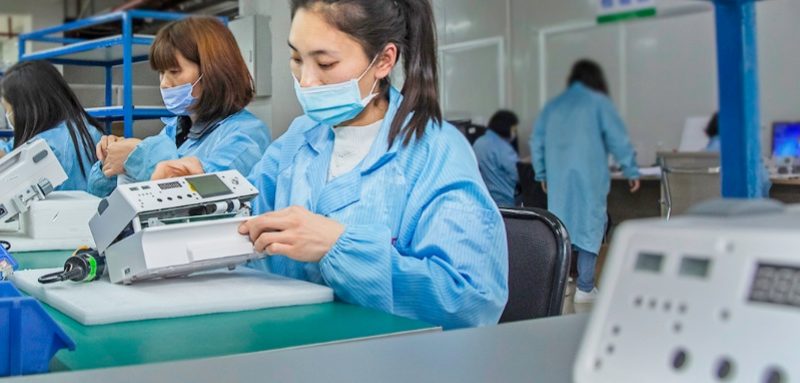
Box build assembly is a critical process in the manufacturing of electronic and electromechanical systems. It involves integrating components like PCBs, wiring, and custom enclosures into a fully functional product. This guide covers everything you need to know about box build assembly, from its process and applications to its benefits and how it differs from PCB assembly.
What is Box Build Assembly?
Box build assembly, also known as systems integration, is the process of assembling and integrating all the components of a product into its final enclosure or “box.” This includes:
Installing PCBs (printed circuit boards).
Connecting wiring harnesses and cables.
Integrating power supplies, connectors, and other subsystems.
The result is a complete, functional unit ready for use in industries like industrial automation, medical devices, and consumer electronics.
The Box Build Assembly Process: Step-by-Step
The box build assembly process is a multi-stage workflow designed to ensure precision and quality. Here’s how it works:
Design and Planning
Engineers create a detailed design and assembly plan, ensuring all components fit within the enclosure and meet functional requirements.
Component Procurement
High-quality components, such as PCBs, cables, and mechanical parts, are sourced from trusted suppliers.
Subassembly Integration
Smaller subsystems, like PCBs and wiring harnesses, are assembled and tested before being integrated into the main enclosure.
Final Assembly
All components are installed into the enclosure, including mechanical fastening, wiring, and connections.
Testing and Inspection
The product undergoes rigorous functional testing and inspection to ensure it meets specifications and industry standards.
Packaging and Shipping
The finished product is carefully packaged and prepared for delivery to the customer.
Quality Control in Box Build Assembly
Quality control is essential to ensure the reliability and performance of box build assemblies. Key procedures include:
Incoming Inspection: Verifying the quality of components before assembly.
In-Process Testing: Testing at various stages to catch and correct issues early.
Functional Testing: Ensuring the product operates as intended under real-world conditions.
Visual Inspection: Checking for defects like loose connections or misaligned components.
Compliance Testing: Ensuring the product meets industry standards (e.g., ISO, RoHS, IPC).
Custom Enclosures for Box Build Assembly
Custom enclosures are often used in box build assembly to meet specific design and functional requirements. Benefits of custom enclosures include:
Tailored Dimensions: Designed to fit unique shapes and sizes.
Environmental Protection: Resistant to dust, moisture, and extreme temperatures.
Aesthetic Appeal: Incorporates branding or design elements.
Specialized Features: Accommodates cooling systems, mounting brackets, or other unique requirements.
Common Applications of Box Build Assembly
Box build assembly is used across a wide range of industries, including:
Industrial Automation: Control panels, motor drives, and sensors.
Medical Devices: Imaging systems, diagnostic equipment, and patient monitors.
Consumer Electronics: Smart home devices, gaming consoles, and audio systems.
Telecommunications: Network routers, switches, and base stations.
Automotive: Infotainment systems, control units, and sensors.
Advantages of Using Box Build Assembly Services
Outsourcing box build assembly to a specialized manufacturer offers several advantages:
Expertise: Access to skilled technicians and engineers with experience in complex assemblies.
Cost Efficiency: Reduced labor and overhead costs compared to in-house assembly.
Scalability: Ability to handle both large-volume production and small-batch custom orders.
Faster Time-to-Market: Streamlined processes and efficient workflows accelerate production.
Key Benefits of Box Build Assembly
Box build assembly provides numerous benefits to manufacturers and end-users:
Integrated Solutions: Combines multiple components into a single, functional unit.
Improved Reliability: Rigorous testing and quality control ensure high-performance products.
Customization: Tailored to meet specific design and functional requirements.
Simplified Supply Chain: Consolidates assembly processes, reducing complexity.
Box Build vs PCB Assembly: What’s the Difference?
While both processes are essential in electronics manufacturing, they serve different purposes:
PCB Assembly: Focuses on populating a printed circuit board with components like resistors, capacitors, and ICs. It is a subset of the box build process.
Box Build Assembly: Encompasses the integration of PCBs, wiring, and other components into a complete system within an enclosure. It is a more comprehensive process that includes PCB assembly as one of its steps.
Conclusion: Why Box Build Assembly is Essential
Box build assembly is a vital process in modern manufacturing, enabling the creation of complex electronic and electromechanical systems. By leveraging specialized expertise, rigorous quality control, and custom solutions, manufacturers can produce high-quality, reliable products that meet the demands of today’s industries.
Whether you’re designing industrial automation systems, medical devices, or consumer electronics, box build assembly offers a streamlined and efficient solution for bringing your product to life. Partnering with a trusted box build assembly provider can deliver significant advantages, from cost savings to faster time-to-market.
